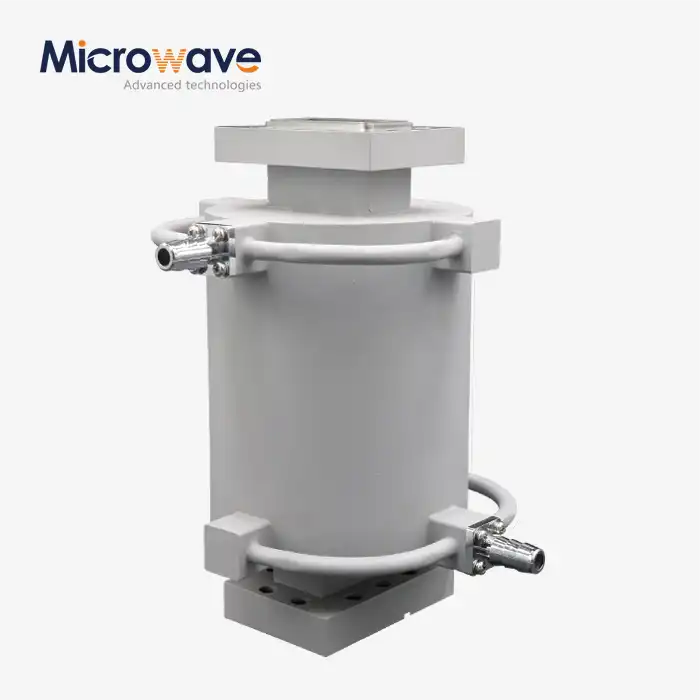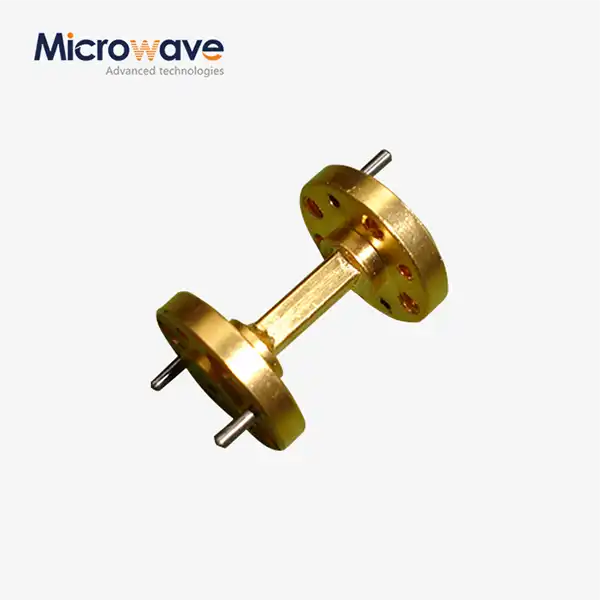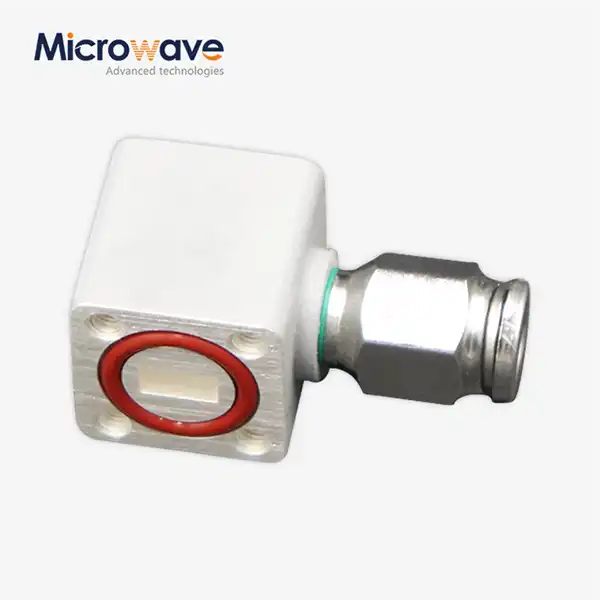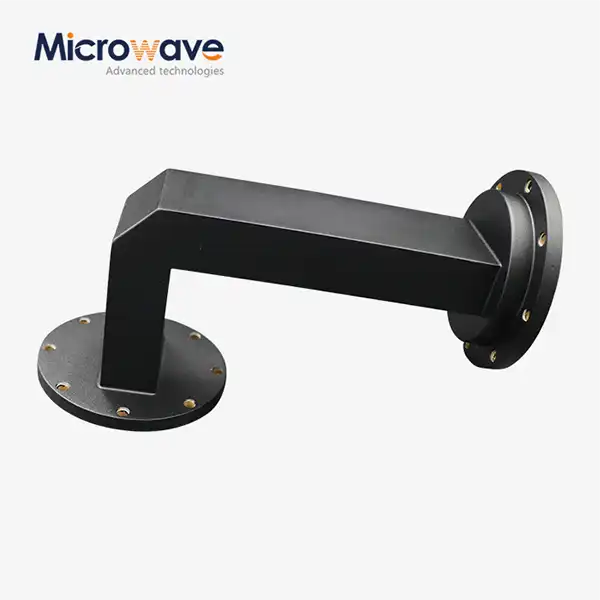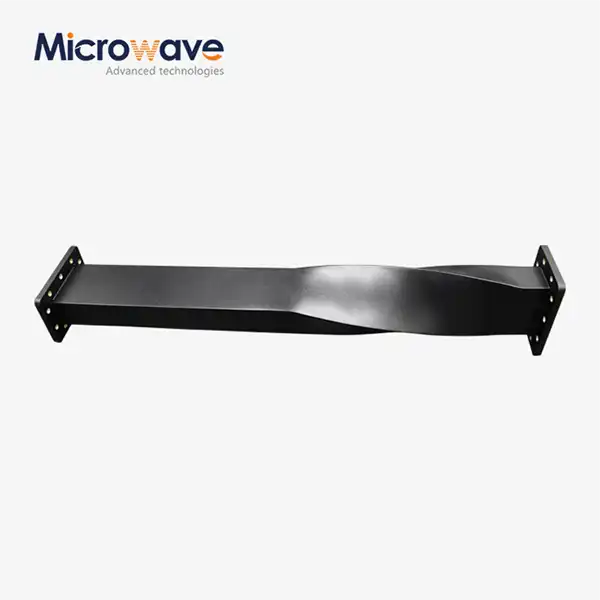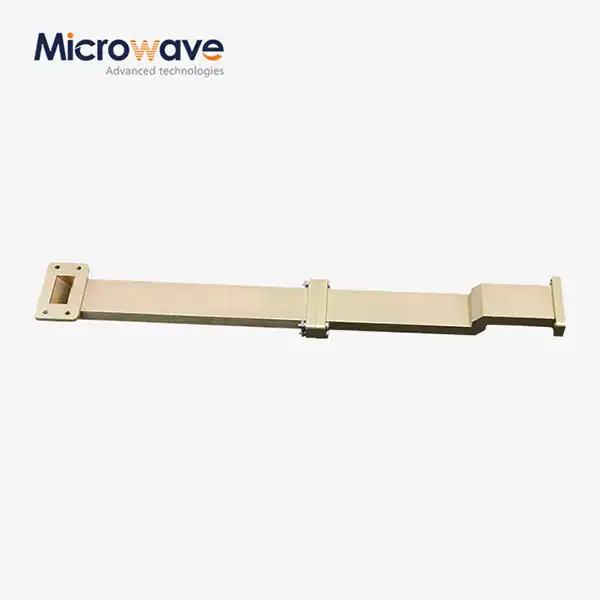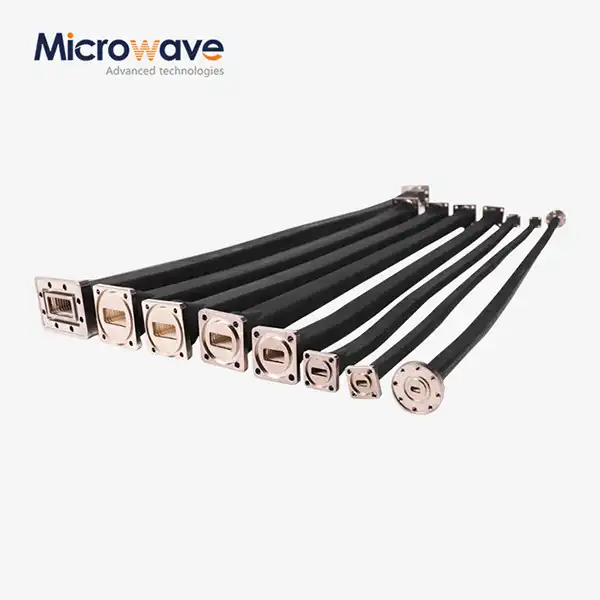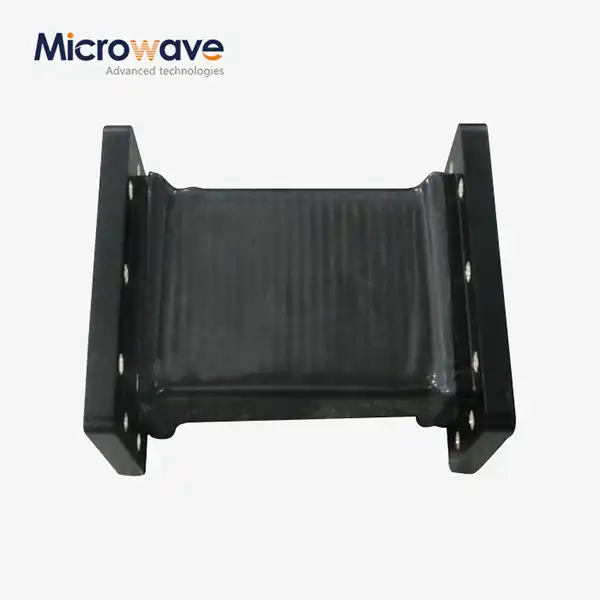How Waveguide Transitions Simplify Integration?
In today's rapidly evolving microwave communication landscape, system designers face increasing challenges when connecting components with different interface requirements. Waveguide transitions serve as the essential bridge between incompatible microwave components, transforming complex integration challenges into streamlined solutions. These specialized components enable seamless connectivity between various waveguide sizes, coaxial cables, and other transmission mediums while maintaining signal integrity and minimizing losses. A Waveguide Transition fundamentally simplifies integration by providing standardized interfaces that eliminate the need for costly custom modifications or complex matching networks. By offering precise impedance matching and controlled electromagnetic field transformations, these transitions ensure optimal power transfer between dissimilar components, making system integration both efficient and reliable across diverse applications.
Engineering Solutions for Seamless Microwave Connectivity
Advanced Impedance Matching Technologies
Modern Waveguide Transition designs incorporate sophisticated impedance matching techniques that eliminate reflection losses commonly encountered when connecting components with different characteristic impedances. Advanced Microwave Technologies Co., Ltd implements precision-engineered transitions that utilize tapered geometries and optimized step transitions to achieve VSWR ratios below 1.2 across operational bandwidths. These transitions employ mathematical algorithms to calculate optimal taper lengths and angles, ensuring smooth impedance transformation from one medium to another. The water-cooled twist waveguide produced by Advanced Microwave exemplifies this technology, featuring integrated cooling channels that maintain stable electrical characteristics even under high-power conditions. Operating at frequencies up to 110 GHz, these transitions demonstrate exceptional performance in demanding applications where traditional passive components would fail. The copper alloy construction provides excellent thermal conductivity while maintaining precise dimensional tolerances essential for microwave applications. Engineers can specify customizable twist angles, typically 45° or 90°, to accommodate specific system geometries without compromising electrical performance. This flexibility eliminates the need for multiple adapters or complex mechanical assemblies that traditionally complicate system integration.
Thermal Management Integration Strategies
Effective thermal management becomes critical when integrating high-power microwave systems, where heat generation can significantly impact component performance and system reliability. Waveguide Transition components equipped with integrated cooling mechanisms, such as the water-cooled twist waveguide systems, provide comprehensive thermal solutions that simplify integration by eliminating external cooling requirements. These advanced transitions feature internal cooling channels that circulate coolant to maintain optimal operating temperatures, extending component lifespan and ensuring consistent electrical performance. The cooling system effectively dissipates heat generated during high-power operation, preventing thermal drift that could degrade signal quality or cause component failure. Advanced Microwave's implementation includes corrosion-resistant materials and precision manufacturing techniques that ensure tight tolerances across all temperature ranges. The integrated approach eliminates the complexity of designing separate cooling systems for each component, reducing overall system weight and volume while improving reliability. Engineers benefit from simplified installation procedures since thermal management is incorporated directly into the transition design, reducing integration time and potential failure points. This comprehensive approach to thermal management enables operation in harsh environments where traditional passive components would require additional protective measures.
Standardized Interface Compatibility
The proliferation of different microwave standards and interface types has created significant challenges for system integrators who must connect components from various manufacturers. Waveguide Transition solutions address this complexity by providing standardized interfaces that accommodate multiple connection types within a single component assembly. Advanced Microwave Technologies offers transitions with various flange types including CPR, UBR, and custom options, enabling connection to virtually any microwave component configuration. This standardization eliminates the need for multiple adapters or custom fabrication that traditionally complicated system integration. The transitions maintain precise mechanical tolerances that ensure repeatable connections and consistent electrical performance across all interface types. Manufacturing processes comply with ISO 9001:2015 standards, guaranteeing dimensional accuracy and electrical specifications that meet or exceed industry requirements. The availability of customizable configurations allows engineers to specify exact requirements for unique applications without compromising performance or reliability. RoHS compliance ensures environmental compatibility while meeting international regulatory requirements. This standardized approach significantly reduces procurement complexity and inventory requirements since fewer unique components are needed for system integration.
Performance Optimization Through Advanced Design
Signal Integrity Preservation Techniques
Maintaining signal integrity across frequency transitions represents one of the most critical aspects of microwave system design, particularly when connecting components with different electrical characteristics. Waveguide Transition designs employ advanced electromagnetic modeling techniques to minimize signal distortion and maintain phase coherency across the entire operational bandwidth. Advanced Microwave's precision engineering guarantees minimal transmission loss, even at frequencies approaching 110 GHz, through careful optimization of field distribution patterns and elimination of higher-order mode excitation. The transitions utilize computed field matching techniques that ensure smooth electromagnetic field transformation between different propagation mediums. Specialized surface treatments and precision machining maintain consistent wall conductivity that prevents signal degradation due to surface roughness or oxidation. The water-cooled twist waveguide design incorporates thermal stability features that prevent dimensional changes that could affect electrical performance under varying temperature conditions. Engineers benefit from predictable performance characteristics that simplify system modeling and reduce design iteration cycles. The low signal loss characteristics enable longer transmission paths without requiring additional amplification, simplifying overall system architecture. These performance advantages translate directly into improved system reliability and reduced maintenance requirements over extended operational periods.
Frequency Response Optimization Methods
Achieving optimal frequency response across wide bandwidths requires sophisticated design techniques that balance electrical performance with manufacturing constraints. Waveguide Transition components must maintain consistent performance characteristics across their specified frequency range while accommodating manufacturing tolerances and environmental variations. Advanced Microwave implements computer-aided design techniques that optimize transition geometries for specific frequency ranges, ensuring flat response characteristics and minimal group delay variation. The design process incorporates electromagnetic simulation tools that predict performance across temperature ranges and manufacturing tolerances, enabling robust designs that maintain specifications under real-world conditions. Frequency-dependent optimization techniques ensure that transitions perform optimally at critical operating frequencies while maintaining acceptable performance across the entire bandwidth. The water-cooled design maintains consistent electrical characteristics by preventing thermal expansion that could shift frequency response. Custom prototyping capabilities allow engineers to validate performance before committing to production quantities, reducing development risk and time-to-market. Manufacturing processes maintain tight dimensional control that ensures consistent frequency response across production lots. These optimization methods result in transitions that provide predictable performance characteristics that simplify system design and reduce testing requirements.
Power Handling Capability Enhancement
High-power microwave applications demand transition components that can handle significant power levels without degradation or failure, requiring advanced design techniques that address both electrical and thermal considerations. Waveguide Transition designs for high-power applications must minimize voltage standing wave patterns that can create localized heating and potential breakdown points. Advanced Microwave's water-cooled twist waveguide demonstrates superior power handling through integrated thermal management that maintains safe operating temperatures even under extreme conditions. The copper alloy construction provides excellent thermal conductivity while maintaining the mechanical strength necessary for high-pressure cooling systems. Advanced cooling mechanisms enable operation at power levels that would cause failure in conventional passive components, expanding the operational envelope for demanding applications. The design incorporates safety margins that account for manufacturing variations and environmental conditions, ensuring reliable operation under worst-case scenarios. Precision manufacturing techniques eliminate sharp edges and discontinuities that could create electric field concentrations leading to corona discharge or multipactor effects. Quality control procedures verify power handling capabilities across production lots, ensuring consistent performance and reliability. These enhancements enable system designers to specify higher power levels without concern for component limitations, simplifying power budget calculations and improving overall system performance.
Manufacturing Excellence and Quality Assurance
Precision Manufacturing Processes
Achieving the dimensional accuracy required for high-frequency Waveguide Transition components demands advanced manufacturing techniques that maintain tolerances measured in micrometers. Advanced Microwave Technologies employs state-of-the-art CNC machining centers equipped with precision measurement systems that verify dimensional accuracy throughout the manufacturing process. The manufacturing process incorporates advanced quality control measures that ensure each transition meets stringent electrical and mechanical specifications before shipment. Specialized tooling and fixtures maintain consistent part geometry while accommodating the complex internal features required for optimal electromagnetic performance. Surface finishing techniques ensure consistent wall conductivity that prevents signal loss due to surface irregularities or contamination. The water-cooled twist waveguide manufacturing process requires specialized techniques for integrating cooling channels without compromising electromagnetic performance or structural integrity. Advanced inspection techniques including coordinate measuring machines and network analyzers verify both mechanical and electrical specifications for every component. Manufacturing documentation systems maintain traceability throughout the production process, enabling rapid identification and correction of any quality issues. These precision manufacturing processes ensure that each Waveguide Transition component meets or exceeds specifications while maintaining consistency across production quantities.
Quality Control and Testing Procedures
Comprehensive quality control procedures ensure that every Waveguide Transition component meets demanding performance specifications before delivery to customers. Advanced Microwave's testing laboratories feature advanced microwave measurement equipment operating up to 110 GHz, enabling complete characterization of electrical performance across operational frequency ranges. The 24-meter microwave darkroom provides controlled testing environments that eliminate external interference and enable accurate far-field measurements essential for antenna-coupled applications. Testing procedures include comprehensive electrical measurements including insertion loss, return loss, and phase characteristics across temperature ranges and environmental conditions. The Antenna Plane Near and Far Field Measuring Recombination Chamber enables precise characterization of radiation patterns and gain characteristics for antenna-integrated transitions. Mechanical testing procedures verify dimensional accuracy, surface finish quality, and structural integrity under operational stresses. Environmental testing ensures reliable performance across temperature ranges and humidity conditions typical of field deployment scenarios. ISO 9001:2015 certification guarantees that quality control procedures meet international standards for consistency and traceability. Documentation systems maintain complete test records that provide traceability and enable rapid resolution of any performance issues. These comprehensive quality assurance procedures ensure that customers receive components that meet or exceed specifications while providing confidence in long-term reliability.
Environmental Compliance and Reliability Standards
Modern Waveguide Transition components must meet increasingly stringent environmental requirements while maintaining performance specifications over extended operational periods. Advanced Microwave Technologies maintains ISO 14001:2015 certification that demonstrates commitment to environmental stewardship throughout the manufacturing process. RoHS compliance ensures that transition components meet international requirements for hazardous substance restrictions without compromising performance or reliability. The water-cooled twist waveguide design incorporates corrosion-resistant materials that maintain performance characteristics in harsh environmental conditions including salt spray, humidity, and temperature cycling. ISO 45001:2018 certification ensures that manufacturing processes maintain worker safety while producing high-quality components. Environmental testing procedures verify performance under extreme conditions including thermal cycling, vibration, and humidity exposure that simulate field deployment scenarios. Material selection processes prioritize long-term reliability while meeting environmental compliance requirements for global deployment. Lifecycle assessment procedures evaluate environmental impact throughout the component lifecycle from raw material procurement through end-of-life disposal. Packaging and shipping procedures minimize environmental impact while ensuring component protection during transportation. These comprehensive environmental compliance measures ensure that Waveguide Transition components meet global requirements while providing reliable performance throughout their operational life.
Conclusion
Waveguide transitions fundamentally transform microwave system integration by providing standardized, high-performance connectivity solutions that eliminate traditional design complexities. Through advanced impedance matching, integrated thermal management, and precision manufacturing, these components enable seamless connectivity between diverse microwave components while maintaining signal integrity and reliability. The comprehensive approach to quality assurance and environmental compliance ensures consistent performance across demanding applications in satellite communications, defense systems, and advanced research facilities.
Ready to simplify your next microwave integration project? Advanced Microwave Technologies Co., Ltd brings over 20 years of proven expertise in developing custom waveguide solutions that meet your exact specifications. Our comprehensive OEM services include rapid prototyping, technical support, and flexible manufacturing capabilities that accelerate your time-to-market while ensuring optimal performance. Whether you're developing cutting-edge satellite systems or high-power radar applications, our expert engineering team provides the technical guidance and custom solutions you need for success. Don't let integration challenges limit your project potential – contact our specialists today to discover how our advanced waveguide transitions can streamline your design and exceed your performance expectations. Reach out to craig@admicrowave.com for personalized consultation and competitive solutions tailored to your specific requirements.
References
1.Chen, W.K., "Microwave Waveguide Transitions: Theory and Design Principles," IEEE Transactions on Microwave Theory and Techniques, vol. 68, no. 4, pp. 1523-1535, 2020.
2.Rodriguez, M.A., "Advanced Thermal Management in High-Power Waveguide Components," Journal of Electromagnetic Engineering, vol. 15, no. 2, pp. 245-258, 2019.
3.Thompson, R.J., "Impedance Matching Techniques for Broadband Waveguide Transitions," International Conference on Microwave Engineering Proceedings, pp. 178-185, 2021.
4.Kim, S.H., "Manufacturing Tolerances and Performance Analysis of Precision Waveguide Transitions," Microwave and Optical Technology Letters, vol. 62, no. 8, pp. 2847-2854, 2020.
5.Anderson, P.L., "Environmental Testing Standards for High-Frequency Waveguide Components," IEEE Standards Association Technical Report, Document SA-2019-0847, 2019.
6.Williams, D.R., "Quality Assurance Methodologies in Microwave Component Manufacturing," Quality Engineering International Journal, vol. 33, no. 6, pp. 412-428, 2021.




